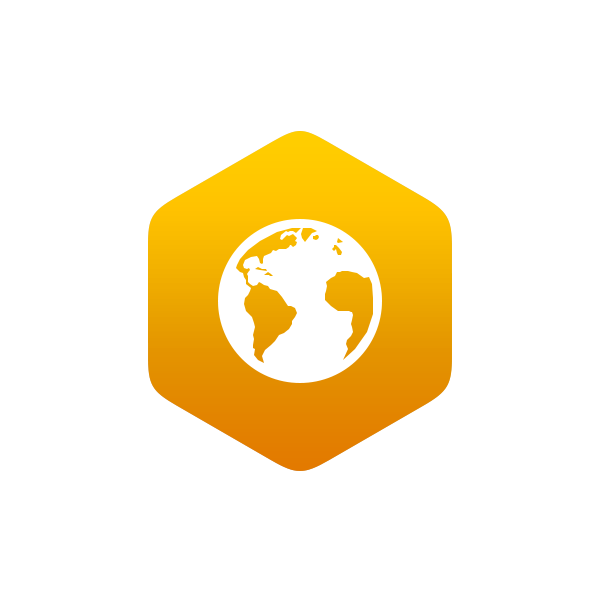3.8: Satellites
- Page ID
- 45471
\( \newcommand{\vecs}[1]{\overset { \scriptstyle \rightharpoonup} {\mathbf{#1}} } \)
\( \newcommand{\vecd}[1]{\overset{-\!-\!\rightharpoonup}{\vphantom{a}\smash {#1}}} \)
\( \newcommand{\dsum}{\displaystyle\sum\limits} \)
\( \newcommand{\dint}{\displaystyle\int\limits} \)
\( \newcommand{\dlim}{\displaystyle\lim\limits} \)
\( \newcommand{\id}{\mathrm{id}}\) \( \newcommand{\Span}{\mathrm{span}}\)
( \newcommand{\kernel}{\mathrm{null}\,}\) \( \newcommand{\range}{\mathrm{range}\,}\)
\( \newcommand{\RealPart}{\mathrm{Re}}\) \( \newcommand{\ImaginaryPart}{\mathrm{Im}}\)
\( \newcommand{\Argument}{\mathrm{Arg}}\) \( \newcommand{\norm}[1]{\| #1 \|}\)
\( \newcommand{\inner}[2]{\langle #1, #2 \rangle}\)
\( \newcommand{\Span}{\mathrm{span}}\)
\( \newcommand{\id}{\mathrm{id}}\)
\( \newcommand{\Span}{\mathrm{span}}\)
\( \newcommand{\kernel}{\mathrm{null}\,}\)
\( \newcommand{\range}{\mathrm{range}\,}\)
\( \newcommand{\RealPart}{\mathrm{Re}}\)
\( \newcommand{\ImaginaryPart}{\mathrm{Im}}\)
\( \newcommand{\Argument}{\mathrm{Arg}}\)
\( \newcommand{\norm}[1]{\| #1 \|}\)
\( \newcommand{\inner}[2]{\langle #1, #2 \rangle}\)
\( \newcommand{\Span}{\mathrm{span}}\) \( \newcommand{\AA}{\unicode[.8,0]{x212B}}\)
\( \newcommand{\vectorA}[1]{\vec{#1}} % arrow\)
\( \newcommand{\vectorAt}[1]{\vec{\text{#1}}} % arrow\)
\( \newcommand{\vectorB}[1]{\overset { \scriptstyle \rightharpoonup} {\mathbf{#1}} } \)
\( \newcommand{\vectorC}[1]{\textbf{#1}} \)
\( \newcommand{\vectorD}[1]{\overrightarrow{#1}} \)
\( \newcommand{\vectorDt}[1]{\overrightarrow{\text{#1}}} \)
\( \newcommand{\vectE}[1]{\overset{-\!-\!\rightharpoonup}{\vphantom{a}\smash{\mathbf {#1}}}} \)
\( \newcommand{\vecs}[1]{\overset { \scriptstyle \rightharpoonup} {\mathbf{#1}} } \)
\( \newcommand{\vecd}[1]{\overset{-\!-\!\rightharpoonup}{\vphantom{a}\smash {#1}}} \)
\(\newcommand{\avec}{\mathbf a}\) \(\newcommand{\bvec}{\mathbf b}\) \(\newcommand{\cvec}{\mathbf c}\) \(\newcommand{\dvec}{\mathbf d}\) \(\newcommand{\dtil}{\widetilde{\mathbf d}}\) \(\newcommand{\evec}{\mathbf e}\) \(\newcommand{\fvec}{\mathbf f}\) \(\newcommand{\nvec}{\mathbf n}\) \(\newcommand{\pvec}{\mathbf p}\) \(\newcommand{\qvec}{\mathbf q}\) \(\newcommand{\svec}{\mathbf s}\) \(\newcommand{\tvec}{\mathbf t}\) \(\newcommand{\uvec}{\mathbf u}\) \(\newcommand{\vvec}{\mathbf v}\) \(\newcommand{\wvec}{\mathbf w}\) \(\newcommand{\xvec}{\mathbf x}\) \(\newcommand{\yvec}{\mathbf y}\) \(\newcommand{\zvec}{\mathbf z}\) \(\newcommand{\rvec}{\mathbf r}\) \(\newcommand{\mvec}{\mathbf m}\) \(\newcommand{\zerovec}{\mathbf 0}\) \(\newcommand{\onevec}{\mathbf 1}\) \(\newcommand{\real}{\mathbb R}\) \(\newcommand{\twovec}[2]{\left[\begin{array}{r}#1 \\ #2 \end{array}\right]}\) \(\newcommand{\ctwovec}[2]{\left[\begin{array}{c}#1 \\ #2 \end{array}\right]}\) \(\newcommand{\threevec}[3]{\left[\begin{array}{r}#1 \\ #2 \\ #3 \end{array}\right]}\) \(\newcommand{\cthreevec}[3]{\left[\begin{array}{c}#1 \\ #2 \\ #3 \end{array}\right]}\) \(\newcommand{\fourvec}[4]{\left[\begin{array}{r}#1 \\ #2 \\ #3 \\ #4 \end{array}\right]}\) \(\newcommand{\cfourvec}[4]{\left[\begin{array}{c}#1 \\ #2 \\ #3 \\ #4 \end{array}\right]}\) \(\newcommand{\fivevec}[5]{\left[\begin{array}{r}#1 \\ #2 \\ #3 \\ #4 \\ #5 \\ \end{array}\right]}\) \(\newcommand{\cfivevec}[5]{\left[\begin{array}{c}#1 \\ #2 \\ #3 \\ #4 \\ #5 \\ \end{array}\right]}\) \(\newcommand{\mattwo}[4]{\left[\begin{array}{rr}#1 \amp #2 \\ #3 \amp #4 \\ \end{array}\right]}\) \(\newcommand{\laspan}[1]{\text{Span}\{#1\}}\) \(\newcommand{\bcal}{\cal B}\) \(\newcommand{\ccal}{\cal C}\) \(\newcommand{\scal}{\cal S}\) \(\newcommand{\wcal}{\cal W}\) \(\newcommand{\ecal}{\cal E}\) \(\newcommand{\coords}[2]{\left\{#1\right\}_{#2}}\) \(\newcommand{\gray}[1]{\color{gray}{#1}}\) \(\newcommand{\lgray}[1]{\color{lightgray}{#1}}\) \(\newcommand{\rank}{\operatorname{rank}}\) \(\newcommand{\row}{\text{Row}}\) \(\newcommand{\col}{\text{Col}}\) \(\renewcommand{\row}{\text{Row}}\) \(\newcommand{\nul}{\text{Nul}}\) \(\newcommand{\var}{\text{Var}}\) \(\newcommand{\corr}{\text{corr}}\) \(\newcommand{\len}[1]{\left|#1\right|}\) \(\newcommand{\bbar}{\overline{\bvec}}\) \(\newcommand{\bhat}{\widehat{\bvec}}\) \(\newcommand{\bperp}{\bvec^\perp}\) \(\newcommand{\xhat}{\widehat{\xvec}}\) \(\newcommand{\vhat}{\widehat{\vvec}}\) \(\newcommand{\uhat}{\widehat{\uvec}}\) \(\newcommand{\what}{\widehat{\wvec}}\) \(\newcommand{\Sighat}{\widehat{\Sigma}}\) \(\newcommand{\lt}{<}\) \(\newcommand{\gt}{>}\) \(\newcommand{\amp}{&}\) \(\definecolor{fillinmathshade}{gray}{0.9}\)Satellite observations have truly revolutionized marine sciences. From a satellite, the entire surface of the world’s oceans can be surveyed in just a few days (Fig. 3-27). In addition, large areas of the oceans can be surveyed comprehensively every few days or even hours. Such synoptic observations from satellites have enabled oceanographers to observe day-to-day, month-to-month, and year-to-year changes in ocean phenomena, including surface currents, surface water temperatures, waves, phytoplankton and suspended-sediment concentrations, and ice cover. Before satellites, such temporal changes could be observed only at fixed locations or within small regions because surface vessels cannot survey large regions quickly or often. Ships may take several weeks to complete a survey of several hundred square kilometers, but ocean conditions can change very rapidly, for example during storms. Hence, observations obtained at the beginning and end of a ship survey often describe very different states of the ocean. The degree to which satellite observations have provided a new view of the oceans is demonstrated by the number of figures in this text that present satellite data to describe important ocean processes.

Satellite observations of the oceans are made with a variety of devices, including radar, lasers, and color- and infrared-sensing scanners. Although satellites allow oceanographers to make rapid and comprehensive observations of the oceans, their value is limited because the sensors they carry rely primarily on electromagnetic radiation, which does not penetrate ocean water effectively. Therefore, most satellite observations record features and processes of only the upper few meters of the oceans and can provide only limited information about processes below the upper layer. However, satellites using radar can successfully monitor sea surface height with a precision that allows filtering their data on different frequencies to monitor ocean depth (Chap. 4), sea level rise, wave energy, tidal height variations, sea ice extent and thickness, and even internal waves and eddies well below the surface.
Satellites have made a special contribution to oceanography as aids to navigation. Until satellite navigation systems were developed, research ships far from land could not determine their locations with great accuracy. When clouds prevented star and sun sightings for several days, a vessel’s position could be determined only with an uncertainty that often exceeded several kilometers. The most recent and accurate satellite navigation system is the Global Positioning System (GPS), which can determine a position anywhere on the Earth’s surface to within a few meters. Precise navigation enables oceanographers to locate and map small features of the seafloor and to revisit precise locations on subsequent research cruises.
Satellites have also enabled high band width communications between land based research facilities and research vessels, platforms, and AUVs. This allows researchers to interactively participate in ocean sampling and other studies without ever leaving their home laboratory as they can monitor activities and communicate by video. This has reduced costs as fewer personnel are needed on research vessels, but its more important impact may be that it makes it possible for a researcher who encounters an unknown species or an unusual occurrence to immediately bring in relevant experts, by video conference, wherever they may be in the world, so these experts can direct or suggest any additional study that might need to be done immediately.
Routine satellite observations of the oceans have many practical uses other than navigation and scientific research. For example, satellite measurements such as surface water temperature are used by fishers to locate the best fishing grounds and information about storms and currents are used by ships’ captains to save fuel. They are also used to forecast weather, especially hurricanes and other storms, and to determine iceberg locations. The growing list of parameters that can be determined by satellites include currents and circulation patterns, internal waves and eddies, ocean surface temperature and salinity, surface wind patterns, wave heights and sea state, bathymetry, sea level rise, chlorophyll and plankton concentrations, distribution of river plumes, concentration of suspended sediment, beach erosion, and shoreline changes. Satellite observations of oceanic and atmospheric temperatures and other parameters will be particularly important in monitoring the enhanced greenhouse effect and its potential impact on world climate, sea level, and biological processes, and in improving our ability to understand and predict such phenomena.

